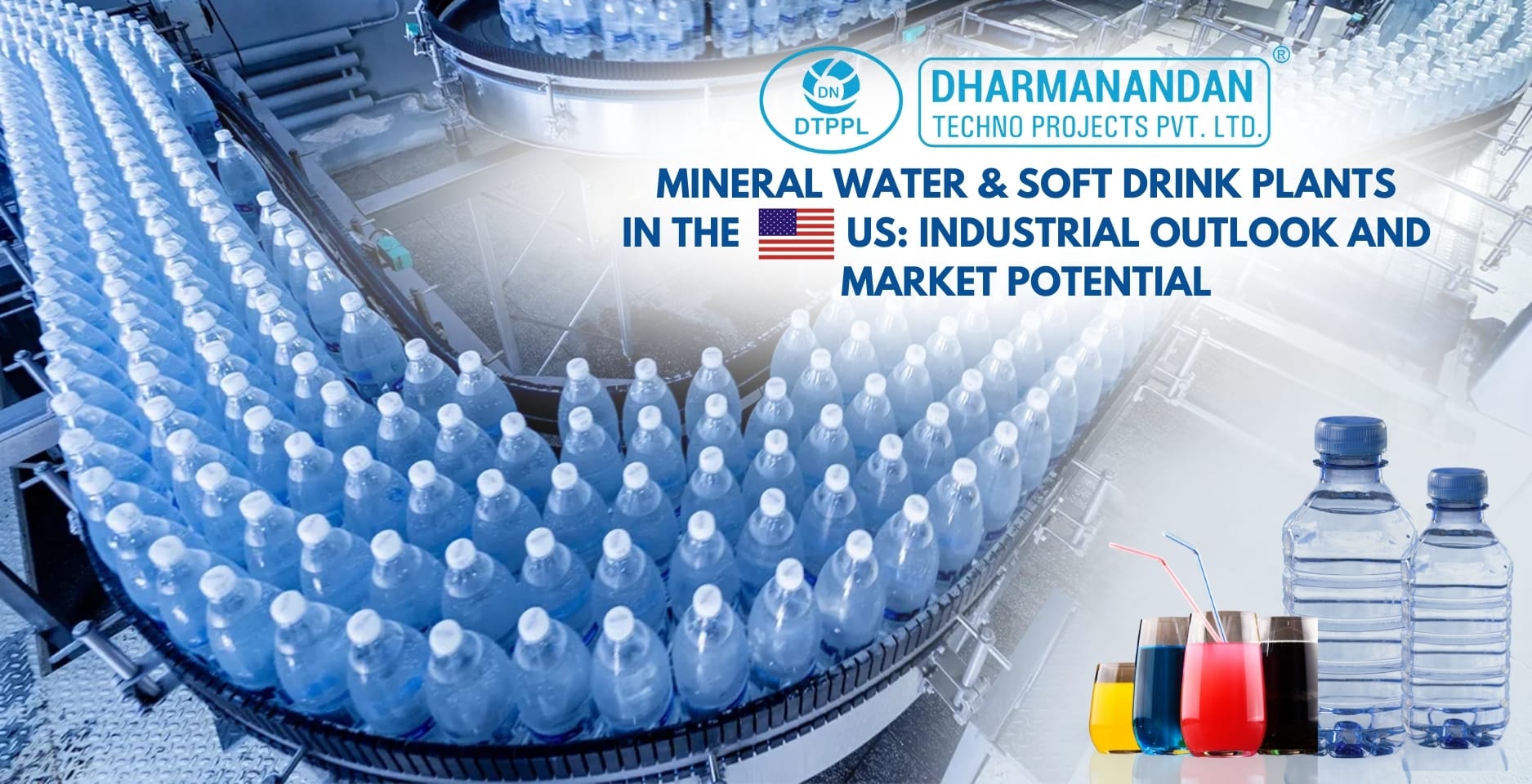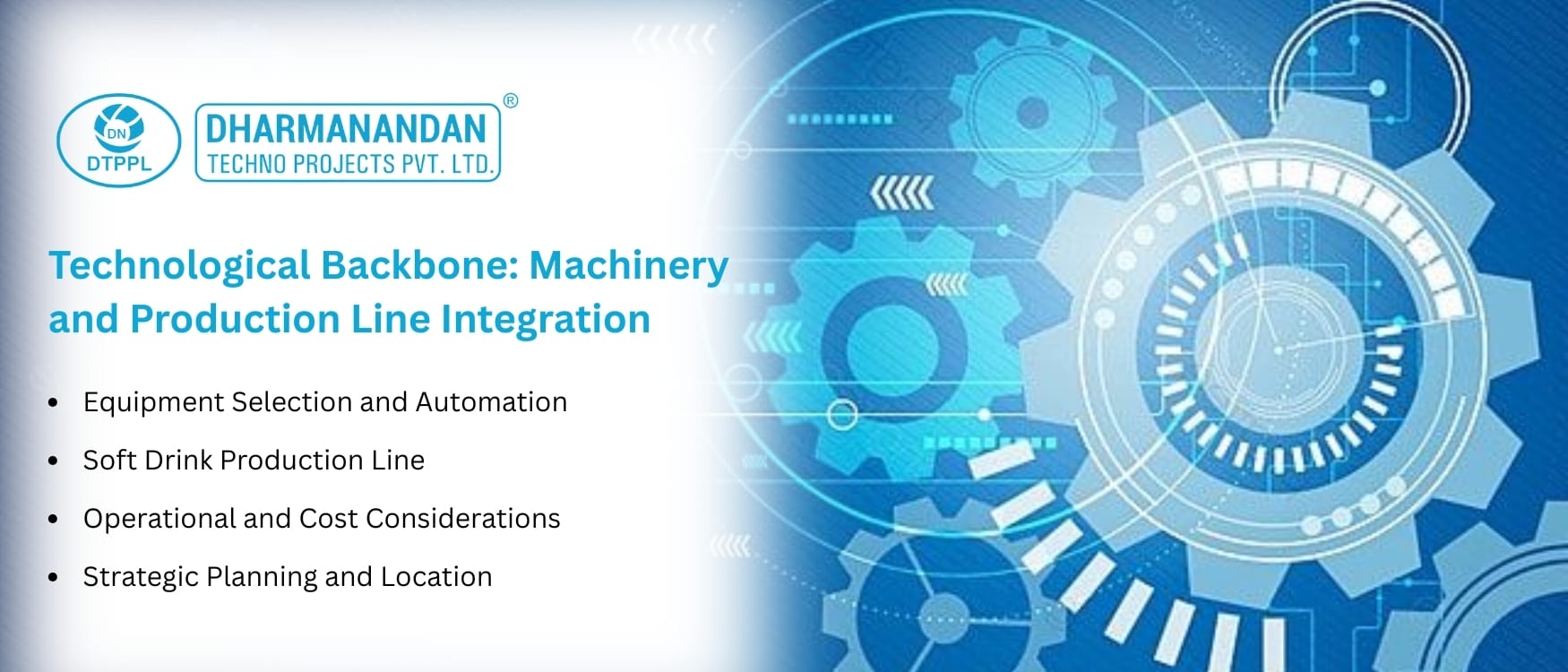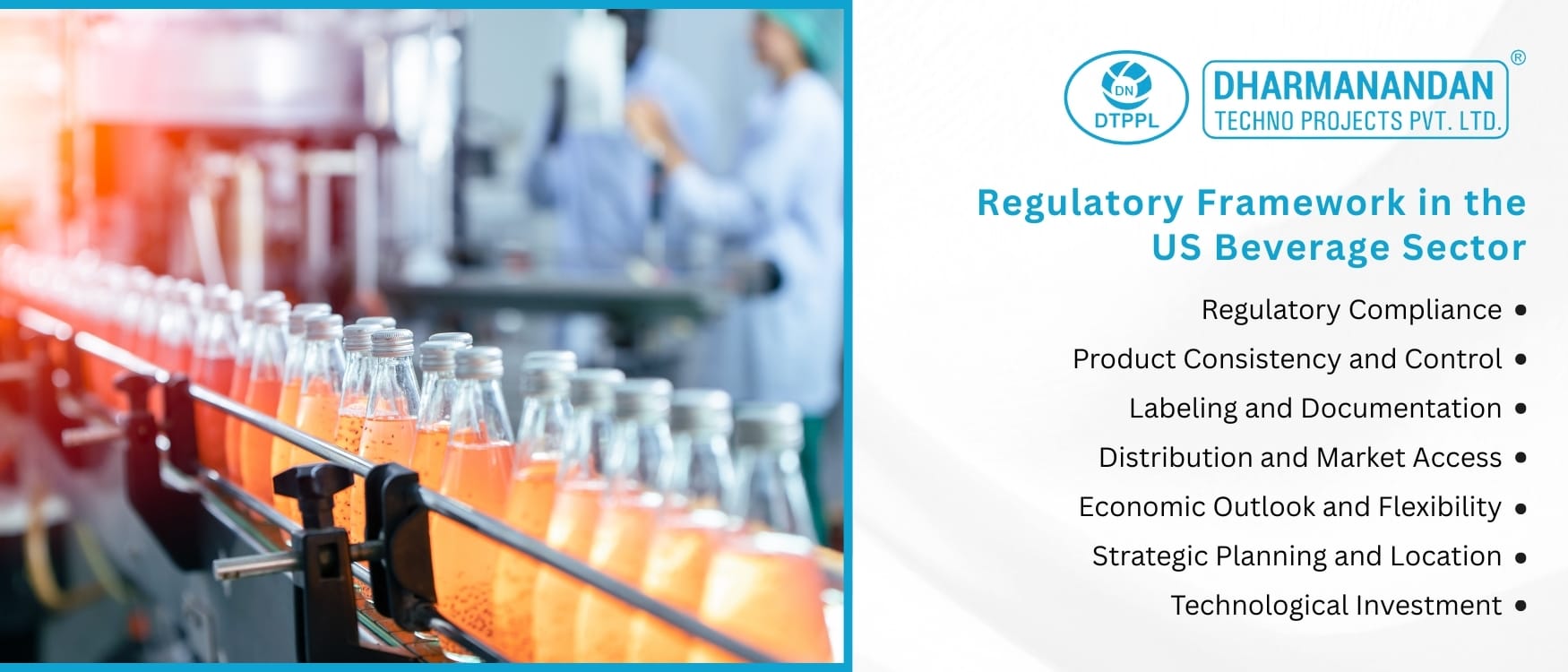
Table of Contents
Mineral Water and Soft Drink Plants in the US: Industrial Outlook and Market Potential
June 23, 2025
In the United States, the beverage industry stands as a cornerstone of consumer product manufacturing. Its diverse segments – from ready-to-drink products to customized bottled solutions – demonstrate consistent market performance. Among these, mineral water and soft drinks continue to represent areas with scalable commercial potential. With urbanization, increasing population mobility and shifting consumption patterns, the need for well-structured production infrastructure has become increasingly apparent.
Launching a Mineral Water Plant in US is a strategic investment choice. Whether the focus lies in catering to hospitality sectors or regional bottling needs, this sector presents avenues for robust growth. A nuanced understanding of regulatory frameworks, production technologies and consumer demands remains essential for success.
The Demand Landscape: Evolving Beverage Preferences in the US
American consumers have long exhibited an affinity for bottled refreshments. Their preference for clean, convenient and refreshing options supports continuous demand across demographics and seasons. This consistent consumption forms the basis for investment in domestic mineral water factories and soft drinks plants.
From natural spring-based options to carbonated flavored drinks, the spectrum of bottled products is vast. As demand grows in both urban and rural distribution zones, manufacturers who invest in modernized systems and efficient bottling techniques are better positioned to fulfill varied market expectations. Launching a new mineral water plant can also tap into localized branding preferences, offering region-specific sourcing or custom packaging solutions.

Technological Backbone: Machinery and Production Line Integration
Setting up a mineral water or soft drinks facility involves integrating a range of processing and packaging equipment. The selection of machinery directly influences output quality and consistency. A mineral water filling machine, for example, is central to operations in a water bottling unit, allowing seamless transitions between rinsing, filling and capping. These machines are increasingly automated to meet modern hygiene and precision standards.
In parallel, a soft drink production line must accommodate specialized processes such as syrup mixing, carbonation and dosing accuracy. For soft drinks, consistency in flavor and texture across high production volumes is critical. Facilities may benefit from installing a Beverages Filling Machine capable of handling different container sizes and closure types, particularly when targeting multiple market segments.
Operators must also weigh the mineral water machine price and associated maintenance costs when planning long-term operational strategies. High-efficiency equipment reduces wastage and downtime while supporting higher production throughput, making the overall setup more economically viable.
Strategic Facility Planning and Location Considerations
A critical factor in determining plant success is its geographical location. In the US, variables such as proximity to transportation hubs, accessibility to raw water sources and compliance with environmental codes influence site selection. Establishing a natural mineral water plant may require additional approvals for source certification and groundwater sustainability assessments.
Planning must extend beyond the physical site to include workflow efficiency. From input water purification to final packaging and warehousing, production lines should be designed for smooth, contamination-free operations. Integrating scalable modules ensures that a facility can grow in output capacity without needing full reconstruction.
Evaluating the mineral water plant project cost also involves consideration of installation, automation, operational staff and quality assurance systems. Building a responsive and adaptable infrastructure improves the plant’s ability to meet market fluctuations and seasonal shifts in demand.

Regulatory Framework in the US Beverage Sector
Regulatory compliance plays a defining role in beverage manufacturing. In the US, both mineral water and soft drinks are governed under stringent federal standards that cover source quality, food safety and product labeling. Operators must ensure all processes align with food-grade guidelines and regularly update certification based on inspections and audits.
A mineral water factory must demonstrate control over contaminants and consistency in mineral content, particularly when promoting the water as naturally sourced. Similarly, Beverage manufacturing plant requires accurate formulation, ingredient traceability and verification of shelf-life stability.
Labeling regulations stipulate transparency around ingredients, expiration dates and batch numbers. Automated systems that manage documentation and real-time monitoring assist in ensuring regulatory alignment. These systems also contribute to efficient recall management, should the need arise.
Distribution Channels and Market Access Strategies
Distribution networks in the US are highly developed, offering multiple points of market entry. Retail chains, online platforms, vending services and institutional supply contracts all form part of the broader market access landscape. Tailoring product types and packaging formats to fit these channels can significantly enhance a plant’s competitiveness.
For instance, individual-size bottles produced in a mineral water plant are suited for retail sales, while large-format dispensers may be directed toward corporate or industrial clients. In soft drink operations, flavor variation and packaging design serve as major differentiation factors.
A flexible soft drinks filling machine that supports multiple formats – such as cans, bottles or PET jugs – provides manufacturers the ability to respond to diverse customer demands. The same logic applies to mineral water operations where brand positioning and convenience directly impact customer loyalty and retention.
Economic Outlook and Long-Term Market Viability
The US beverage sector, supported by stable consumption patterns and favorable business conditions, remains a reliable space for industrial investment. As consumer preferences lean toward variety and perceived purity, facilities that deliver on both efficiency and quality may retain a durable market position.
With a strong initial setup, a Soft Drink Plant in US can cater to seasonal surges and flavor innovations without operational disruption. Similarly, mineral water facilities that utilize high-speed, hygienic equipment may maintain consistent output, even as packaging or product volumes vary.
Long-term success often stems from flexible infrastructure, strong supplier partnerships and the ability to adapt production lines in response to evolving consumer needs. Manufacturers who continuously evaluate and optimize performance are better placed to capitalize on future expansion opportunities.
Conclusion
The industrial potential for setting up a mineral water plant or soft drinks plant in the United States is both feasible and promising. Driven by sustained consumer demand and supported by advanced machinery and logistics infrastructure, beverage manufacturing continues to be a resilient and rewarding field.
Successful implementation depends on strategic planning, regulatory alignment and technological investment. As the market favors quality and variety, businesses equipped with modern production lines and a clear market entry strategy can navigate the competitive landscape effectively.
Whether entering through private labels, regional branding or national distribution, the foundational advantages of the US beverage industry remain intact – offering a dependable platform for long-term growth and operational excellence.
Dharmanandan Techno Projects Pvt. Ltd. (DTPPL): The USA States to serve with Mineral Water & Soft Drink Plants Solutions
Alabama | Alaska | Arizona | Arkansas | California | Colorado | Connecticut | Delaware | Florida | Georgia | Hawaii | Idaho | Illinois | Indiana | Iowa | Kansas | Kentucky | Louisiana | Maine | Maryland | Massachusetts | Michigan | Minnesota | Mississippi | Missouri | Montana | Nebraska | Nevada | New Hampshire | New Jersey | New Mexico | New York | North Carolina | North Dakota | Ohio | Oklahoma | Oregon | Pennsylvania | Rhode Island | South Carolina | South Dakota | Tennessee | Texas | Utah | Vermont | Virginia | Washington | West Virginia | Wisconsin | Wyoming | American Samoa | Guam | Northern Mariana Islands | Puerto Rico | U.S. Virgin Islands
About Author

Director – Global Marketing and Sales
Mr. Bhavesh from Dharmanandan Techno Projects Pvt. Ltd. has played a pivotal role in elevating the DTPPL brand to the global stage, leveraging his exceptional expertise in marketing and communications. He is committed to helping clients achieve significant growth while strengthening their own brands. Dharmanandan Techno Projects Pvt. Ltd. is a leading manufacturer and supplier of water purification systems and turnkey solutions for mineral water plants. With years of experience in designing and delivering high-quality water treatment solutions, the company provides end-to-end services, including system design, installation, maintenance, and ongoing support. Specializing in scalable and customizable water plants, DTPPL has successfully served industries worldwide, ensuring clean and safe drinking water across diverse applications.




